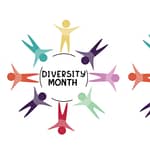It’s well narrated and proven, not just by Engage for Success, that organisations who proactively embrace and give their employees a genuine voice have improved engagement. Employee surveys, town halls and listening forums are all great, and I certainly don’t advocate changing them, but I’m observing a growing challenge.
It’s not just in how we capture feedback, it’s what we do with the feedback. Of course, having a voice is no use if actions are not taken as a result, and I genuinely believe organisations have tried to embrace employee feedback over the last decade, but this is where the challenge is evolving. With growing diversity and visions to develop more inclusive working environments, comes the challenge of diversity of opinion.
It’s one thing getting the results of an employee survey that unanimously shows there’s insufficient canteen provision or that suggests the supervisory layer need better communication skills training but what if the feedback is the opposite of unanimous and that what your workforce want is so vastly different that taking any of the feedback would make one part of the workforce happier whilst actively demotivating other parts.
COVID is a great example of this broad spectrum of opinion, many organisations are finding that when trying to seek the sentiment of their teams to inform their office reopening plans, the opinions are divided between extreme anxiety or thriving in homeworking to those running towards the office desperate to see colleagues again or escape challenging homeworking set ups.
Picture the scene: As a committed employee, you’ve worked hard throughout COVID, picking up your furloughed colleague’s workloads and overcome huge challenges supporting your vulnerable family at home. Already anxious about venturing outside as the country starts to come out of lockdown, you welcome receiving a survey from your employer, seeking your opinion on returning to the office after a year. You value the opportunity to contribute to the decisions being made and share your well-reasoned concerns only to receive communication confirming that ‘in line with the overriding majority of feedback’ the offices will re-open and all employees will be expected to attend the office for meetings and a minimum of two days a week in order to maintain the culture of the company’. The shift from ‘feeling heard’ to ‘feeling invisible’ is profound and engagement evaporates. Employee voice is not just about listening to the majority it’s also about listening to the minority.
But it isn’t just COVID that will create this gaping divide, with the long overdue focus on increasing workplace diversity and five generations working side by side in the workforce, other key topics like technology, office décor, facilities and approaches to collaboration and creativity are also likely to draw divided opinion.
What are employers to do? They can’t keep everyone happy all the time. Does compromise invariably sacrifice happiness for any? How can employers maintain a sense of listening, making individuals across diverse workforces feel heard? Firstly, I’m hoping that many of the growing trends we’re seeing already will play a part here:
Treating employees like adults: There’s been a real growth in adult:adult leadership approaches (replacing an older, more top down parent:child approach). For many organisations, this really helped during the Covid crisis where there was a much greater sense of united togetherness. It’s this adult approach that can also help unravel differing feedback, taking a more mature approach to empowering different parts of the workforce to work in different ways, embrace different rewards or even return to the office in different ways.
Honesty and transparency: A more authentic narrative in organisations has also been seen during Covid and this is vital for feeding back to employees when there’s differing opinion, acknowledging that whilst there’s no one size fits all the various voices are all being heard.
Human Leadership: With an ever-increasing focus on mental wellbeing, employers will need to get used to tackling sensitive topics and not just show more compassion themselves but also embrace their workforces to show more compassion for colleagues who may have different perspectives. Bringing kindness into workforces will help unite teams and navigate differing opinions.
As well as these growing trends, there are a number of tangible actions that organisations can take, here’s my top three tips:
#1 Make sure you are capturing a diversity of voices
We’re used to making sure that different functions, departments and teams are represented in listening forums but review participation again through the diversity lens, are you covering different genders, races, age groups, sexual preferences, working hours, length of service etc. These are all valuable groups who may not be getting a voice.
#2 Use inclusive language
Consider the office re-opening example earlier, a simple change to language and a more flexible approach can increase engagement and inclusivity. For example: ‘If you feel [XXX] then [YYY] is available, however if you would prefer [AAA] then [BBB] is also available’
#3 Change the way you measure success
Whilst there’s no room for exclusivity in an inclusive workplace there is room for reduced participation. When a Virtual Team Quiz is one person’s worst nightmare and another’s highlight in an otherwise isolated week, it’s important for employers to think about success beyond turnout (bums on seats). Enabling employees to feel comfortable to simply say ‘no’ to things that don’t work for them, giving them choice is a great way to give them a voice. Not participating doesn’t mean they’re not engaged it means they want to engage in a different way. Diversity means listening to different voices and providing a broader range of ways to engage, communicate and bond as teams.
I’d love to hear how you’re managing employee voice in an increasingly diverse environment. What great examples have you developed or observed?
Author Bio: Sally Pritchett, experienced communications expert at Something Big a leading Creative Communications Agency helping businesses engage their employees through better communication.




